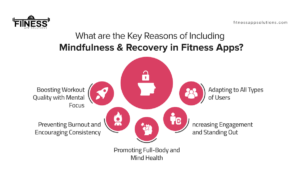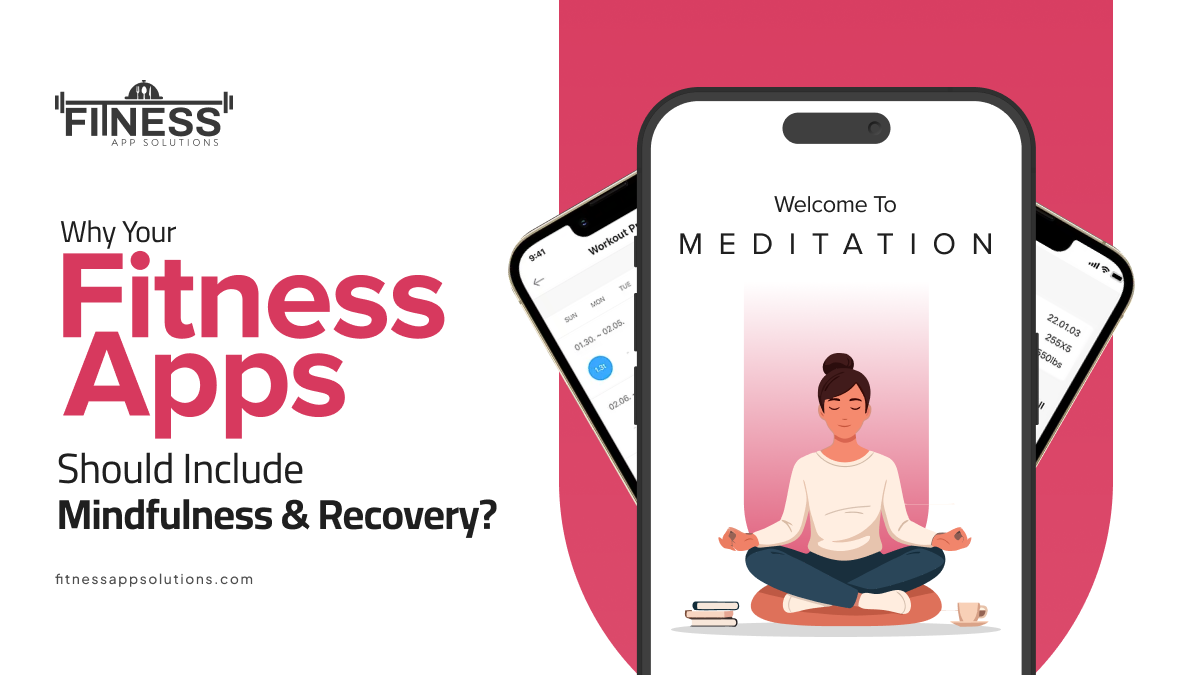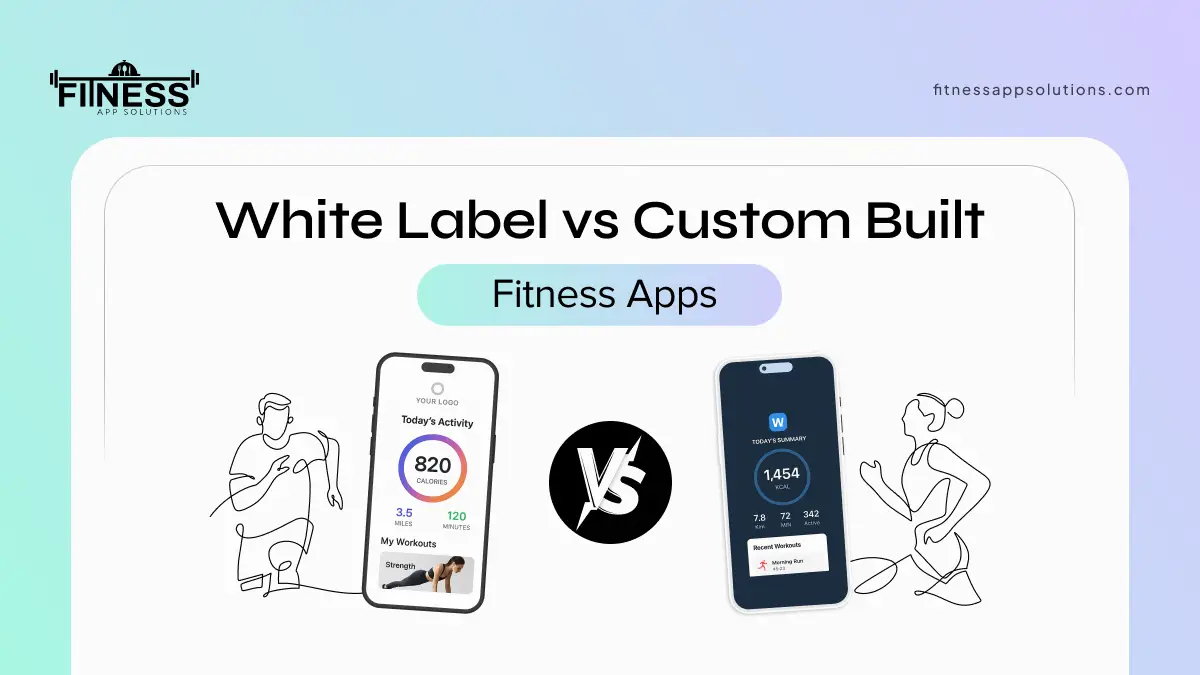Fitness apps have changed how we stay active, tracking steps, calories, and workouts. But to truly support users, these apps need to go beyond numbers and include mindfulness and recovery. Mindfulness in fitness apps is about being present and calm, like taking a moment to breathe deeply. Recovery means letting your body rest and heal after exercise, such as through good sleep or light stretches. This blog explains why adding these to your fitness app is smart. It helps users feel better in body and mind, reduces stress, and keeps them coming back.
Many people quit fitness apps because of stress or tiredness. By adding mindfulness in fitness apps, you can help users relax and enjoy their routines more. Recovery features, like rest reminders, prevent injuries and build strength over time. We will explore simple reasons, benefits, and steps to add them. Whether you are a fitness app developer or just using the app, this guide shows how mindfulness and recovery can make fitness easier and more rewarding.
Why Integrating Mindfulness & Recovery is Necessary in Fitness Apps?
The Growing Role of Fitness Apps in Daily Life:
Fitness apps began as basic trackers, but now play a big part in our health. They help with goals like losing weight or building muscle. However, focusing only on physical activity misses the bigger picture. Mindfulness and recovery fill this gap by caring for mental health, too. Without them, users might feel overwhelmed or injured, leading to quitting. Experts agree that recovery helps the body repair after workouts, while mindfulness keeps the mind sharp and positive.
Tackling Common Health Issues
In our busy world, stress and fatigue are common problems. Holistic fitness apps with mindfulness offer easy ways to handle this, like short breathing exercises. This lowers stress hormones and makes exercise feel less like a chore. Recovery adds balance by encouraging rest, so users don’t overdo it. Together, they create a complete approach that supports long-term health.
Meeting User Needs in a Changing Market
People today want apps that do more than count reps. They seek tools for mental well-being. Adding mindfulness in fitness apps meets this demand and makes your app special. Users appreciate features that feel supportive, leading to better reviews and more downloads.
What are the Key Reasons of Including Mindfulness & Recovery in Fitness Apps?

Boosting Workout Quality with Mental Focus
Mindfulness helps users concentrate during exercise. It clears the mind of worries, allowing better performance. For example, a quick meditation before a run can help someone stay motivated and run longer. Recovery ensures the body bounces back, like recharging a battery. Apps can suggest rest periods, leading to stronger muscles and fewer setbacks.
Preventing Burnout and Encouraging Consistency
Burnout happens when people push too hard without breaks. Mindfulness teaches calm techniques to manage stress, so users keep going. Recovery features, such as sleep trackers, help users wake up refreshed. This builds habits that last, turning short-term efforts into lifelong routines.
Promoting Full-Body and Mind Health
Fitness isn’t just about the body; it’s about feeling good overall. Mindfulness can lift moods and ease anxiety, making workouts enjoyable. Recovery supports physical healing, reducing pain and boosting energy. Apps with these elements help users live healthier, happier lives.
Increasing Engagement and Standing Out
Adding mindfulness and recovery makes apps more interactive. Users might try fun challenges, like daily breathing sessions, and share progress. This attracts new users and keeps old ones loyal. In a world of many apps, these features make yours unique and valuable.
Adapting to All Types of Users
Everyone’s fitness journey is different. Holistic fitness apps offer simple options for beginners, like basic meditations, or advanced ones for pros. Mindfulness and recovery work for all ages, from kids to seniors, making apps inclusive and helpful.
How to Add Mindfulness & Recovery to Your Fitness App?
1.Easy Steps to Get Started
To include these, begin with user-friendly features. For mindfulness, add short audio guides for breathing or focus exercises. For recovery, include reminders for rest days or light activities. Make them simple to access, like a button in the main menu. Start by researching user preferences through surveys to ensure the features match what people want.
2.Designing for Better User Experience
Think about what users like. Use clear instructions and visuals, such as calming images or progress bars. Test with real people to ensure it’s easy to use. Partner with health experts for reliable content. Consider gamification, like earning badges for completing mindfulness sessions, to make it fun and encourage regular use.
3.Practical Tips from General Advice
Experts suggest linking features to workouts. For instance, end a session with a mindfulness moment to reflect. Recovery can include tips like drinking water or stretching. Start with free basics to build interest, then offer premium options. Integrate wearable device data for personalized recovery advice, such as adjusting rest based on heart rate. Also, provide educational content, like short videos on how to add mindfulness tools to your fitness app, to guide users.
4.Ensuring Accessibility and Inclusivity
Make features available in multiple languages and for different abilities. For example, offer voice-guided mindfulness for visually impaired users. Regularly update based on feedback to keep improving. These builds trust and broaden your app’s appeal.
5.Measuring Success and Iterating
Track how users interact with new features using analytics. Look at engagement rates, like time spent on mindfulness sessions. Use this data to refine, such as adding more variety in recovery options. This iterative approach ensures the app evolves with user needs.
6.Real-World Examples
Many apps have added these successfully. For example, some include meditation libraries that users love for stress relief. Others with recovery tools, like sleep advice, see happier users who stick around. These show how simple changes can make a big difference.
Conclusion
In final words, integrating mindfulness and recovery into your fitness app isn’t just an add-on. It’s a powerful way to transform how users experience health and wellness. By boosting mental focus, preventing burnout, and promoting overall well-being, these features create a more supportive and engaging platform that stands out in a crowded market.
This holistic fitness app approach can lead to higher user satisfaction, longer app usage, and even positive word-of-mouth that drives growth. For developers, the benefits extend to innovation and loyalty, as holistic fitness apps become the new standard. Users, on the other hand, gain tools that make fitness sustainable and enjoyable, turning potential dropouts into lifelong advocates.
Contact us for more guidance; let’s build a healthier future together!
Frequently Asked Questions (FAQs)
What is mindfulness in a fitness app?
It’s simple practices like breathing or meditation to help you stay calm and focused during and after workouts.
How do I add recovery to my app?
Include easy tools like rest reminders, sleep trackers, or light exercise suggestions to help users recover properly.
Why are holistic fitness apps better?
They support both body and mind, making fitness more balanced and enjoyable for everyone.
Can mindfulness reduce stress?
Yes, it teaches techniques that calm the mind, helping with daily stress and improving workout experiences.
What role does recovery play in fitness?
It allows the body to rest and heal, preventing injuries and keeping energy levels high for better results.


